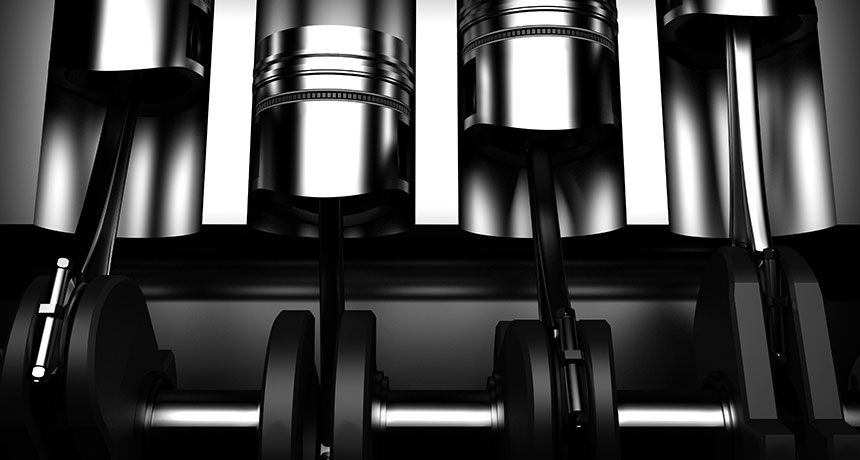Mini machines can evade friction by taking quantum shortcuts
Such maneuvers help make these tiny engines maximally efficient

POWER THROUGH Car engines operate using pistons (illustrated), which convert the heat from burning fuel into motion. Friction decreases the efficiency of such engines, but quantum machines can evade that limitation.
3alexd/iStockphoto